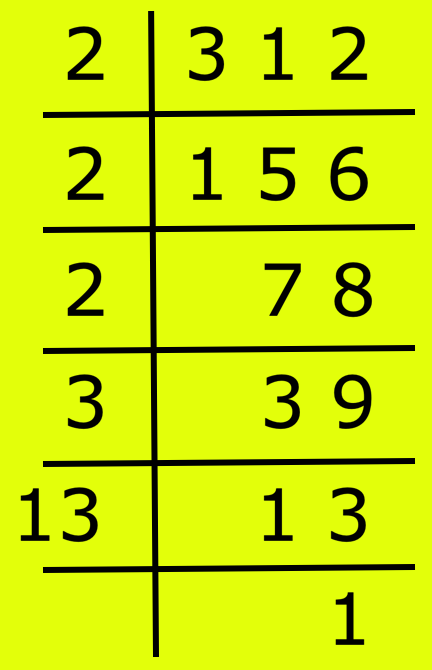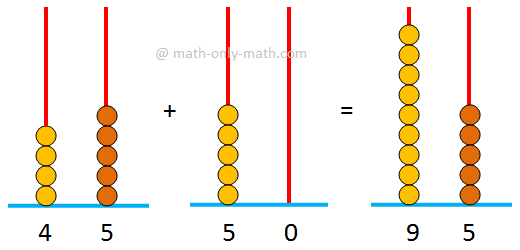Worksheet on Use of Formula for Compound Interest
Studying about compound interest we have known about the formulae used in compound interest. Also, we solved few examples based on them. Now, under this topic we’ll solve few more questions based on the formulae used in the compound interest. Lets first have a recap about the formulae we came across:-
Case 1: When the interest is compounded yearly:
A = P(1+R100)T
Case 2: When the interest is compounded half yearly:
A = P(1+R2100)2T
Case 3: When the interest is compounded quarterly:
A = P(1+R4100)4T
Case 4: When the time is in fraction of a year, say 215, then:
A = P(1+R100)2(1+R5100)
Case 5: If the rate of interest in 1st year, 2nd year, 3rd year,…, nth year are R1%, R2%, R3%,…, Rn% respectively. Then,
A = P(1+R1100)(1+R2100)(1+R3100)...(1+Rn100)
Case 6: Present worth of Rs x due ‘n’ years hence is given by:
Present worth = 11+R100
where symbols have their usual meanings.
A fact that we all know very well is that interest is the difference between amount and principal sum, i.e.,
Interest = Amount – Principal
Now try to solve below given questions based upon these formulae:
1) A man borrows $20,000 from a bank at the interest rate of 6% per annum compounded annually. Calculate the amount that he needs to pay back the bank after 3 years. Also find the interest charged by the bank on the man.
2) Rishabh takes a loan of $25,00,000 from the bank at the interest rate of 10% per annum compounded annually for 5 years. Calculate the amount that he has to pay the bank after this tenure of time. Also, calculate the interest charged by the bank on this sum of money.
3) A man borrows an amount of $45,000 from a bank at the interest rate of 7% per annum compounded semi annually for 2 years. Calculate the amount that man needs to return to the bank after this period of time. Also, find the interest charged by the bank.
4) A bank lends a sum of $25,000 to a man at an interest rate of 10% per annum compounded quarterly. Calculate the amount that the man needs to pay to the bank after a tenure of 3 years. Also calculate the interest charged by the bank on this amount.
5) Rajeev took a loan of $10,00,000 from a bank at an interest of 7% per annum compounded quarterly for 5 years. Calculate the amount he pays to the bank after this period of time. Also, calculate the interest charged by the bank on this sum.
6) Three consecutive rates of interest are applied on a sum of $25,000. The rates of interest are 5%, 10% and 12% for three years. Calculate the amount one needs to pay to the bank after three years of tenure. Also find the interest charged by the bank.
7) If rates of 6%, 8%, 10% and 15% are rates of interest charged by a bank 4 consecutive years on a sum of Rs2,00,000. Calculate the amount one needs to pay to the bank for the sum. Also, calculate the interest charged by the bank on this sum.
Solutions:
1) Amount = $23,820.32
Interest = $3,820.32
2) Amount = $40,26,275
Interest = $15,26,275
3) Amount = $51,638.53
Interest = $6,638.53
4) Amount = $33,622.22
Interest = $8,622.22
5) Amount = $14,14,778.19
Interest = $4,14,778.19
6) Amount = $32,340
Interest = $7,340
7) Amount = $2,89,634.4
Interest = $89,634.4
Compound Interest
Introduction to Compound Interest
Formulae for Compound Interest
Worksheet on Use of Formula for Compound Interest
9th Grade Math
From Worksheet on Use of Formula for Compound Interest to HOME PAGE
Didn't find what you were looking for? Or want to know more information about Math Only Math. Use this Google Search to find what you need.
Recent Articles
-
5th Grade Factors and Multiples | Definitions | Solved Examples | Math
Mar 23, 25 02:39 PM
Here we will discuss how factors and multiples are related to each other in math. A factor of a number is a divisor which divides the dividend exactly. A factor of a number which is a prime number is… -
Adding 2-Digit Numbers | Add Two Two-Digit Numbers without Carrying
Mar 23, 25 12:43 PM
Here we will learn adding 2-digit numbers without regrouping and start working with easy numbers to get acquainted with the addition of two numbers. -
Worksheet on 12 Times Table | Printable Multiplication Table | Video
Mar 23, 25 10:28 AM
Worksheet on 12 times table can be printed out. Homeschoolers can also use these multiplication table sheets to practice at home. -
Vertical Subtraction | Examples | Word Problems| Video |Column Method
Mar 22, 25 05:20 PM
Vertical subtraction of 1-digit number are done by arranging the numbers column wise i.e., one number under the other number. How to subtract 1-digit number vertically? -
Worksheet on 11 Times Table | Printable Multiplication Table | Video
Mar 22, 25 05:08 PM
Worksheet on 11 times table can be printed out. Homeschoolers can also use these multiplication table sheets to practice at home.






New! Comments
Have your say about what you just read! Leave me a comment in the box below. Ask a Question or Answer a Question.